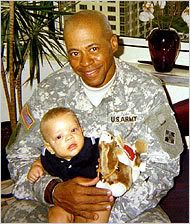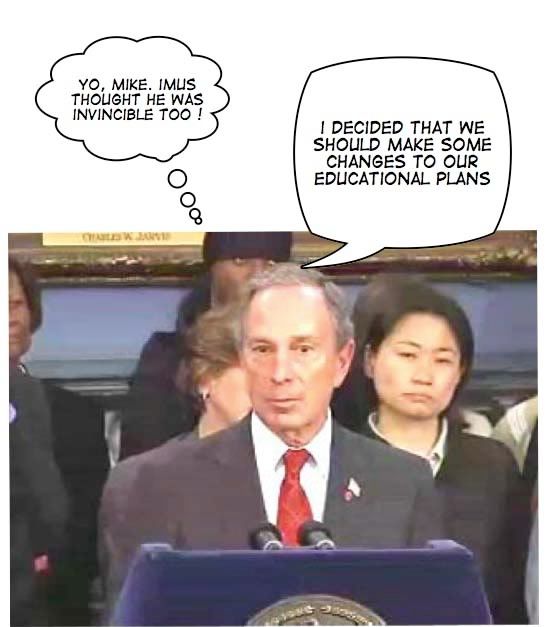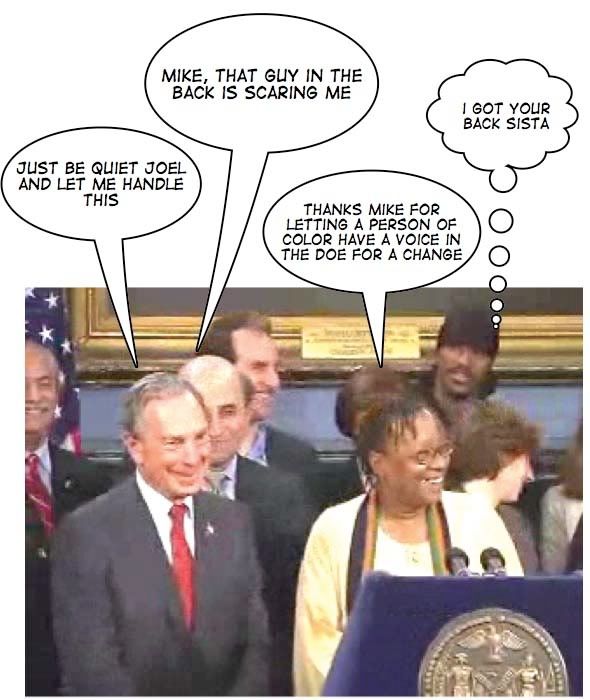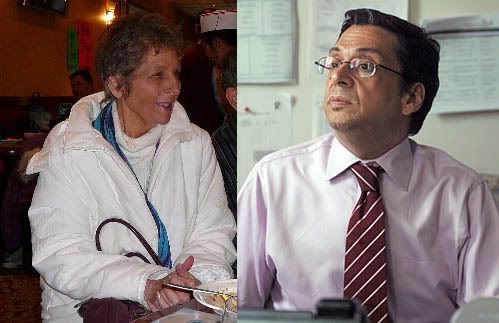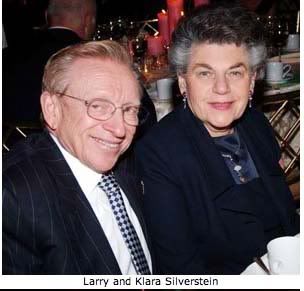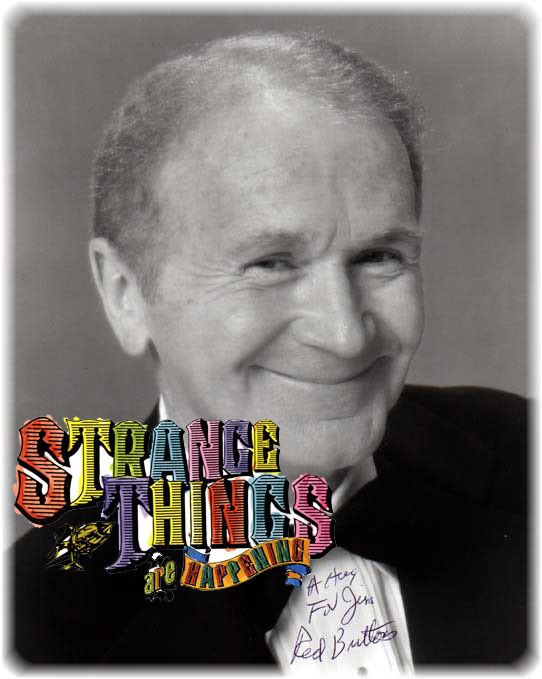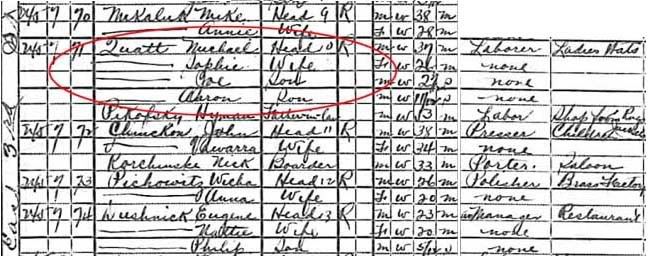 Finally, a shot across the bow of the TC Steamboat. Thanks to the NYsun for having the courage to print what the Times' and others should have printed a long time ago.
Finally, a shot across the bow of the TC Steamboat. Thanks to the NYsun for having the courage to print what the Times' and others should have printed a long time ago.Coach Class
BY BARBARA FEINBERG_April 27, 2007_URL: http://www.nysun.com/article/53350
Next fall many New York City public school teachers may find their "literacy coach" — most likely a young woman — compelling them to teach reading and writing exclusively by the methods of the Teachers College Reading and Writing Project.
The project, headed by educator Lucy Calkins, was taken on in 2003 by Chancellor Klein in a three-year, $5.4 million no-bid contract to revamp how literacy is taught in New York's schools. Next year, the project will continue to offer services in many schools. Along with onsite labs, leadership seminars, and curricular materials, literacy coaching is a key tool toward fulfilling the Department of Education contract, and Ms. Calkins's desire to "radically transform schools."
I got a glimpse of how the project goes about training these coaches when I attended a free, open-to-the-public workshop last month called, "The Project's Latest and Best Thinking for Literacy Coaches (and Others who Provide Professional Development for Teachers)."
While Ms. Calkins, in a recent e-mail asserted, "We don't regard the work we do as re-training teachers — we provide professional development to interested colleagues," this respectful spirit of collegial cooperation, unfortunately, was not borne out in the workshop.
In fact, beyond all the lingo and sweet talk about "co-authoring" and "co-discovery," the message that came through the loudest was the project's certainty that they knew what was best for teachers, even if teachers themselves didn't. This certainty made it permissible to do whatever it took to get teachers to comply with the project's goals — meaning employing methods that were infantilizing and awkward.
The workshop instructor, an affable and well-spoken woman, tried valiantly to describe the dizzyingly complex apparatus coaches are instructed to use when standing beside a teacher. She sketched out how coaches were to have teachers "copy cat" their "mini-lessons" or "freeze frame" so the coach could "whisper in the moment" — in front of the children — the lesson they wanted teachers to learn.
While trying to grasp all the involved steps that a coach has to implement, an audience member asked a question that seemed to be on everyone's lips: "How do you keep your methods from feeling offensive to teachers?"
The instructor replied by admitting that often teachers did tend to feel offended, and that it was a "perennial problem." But she quickly went on to say, "It's important for principals to tell their teachers that they have to comply; to say, ‘This is the culture of our school now; this is what we do.'" She went on to add a somewhat ominous comment, "a lot of teachers get weeded out," suggesting that those who don't conform are forced out. Although in what way this enforced expulsion occurs was left disturbingly vague.
This kind of hubris is not surprising — it mirrors the attitude of Ms. Calkins herself. Again, looking beyond her fancy rhetoric that promises "dialogue" and "respect," she routinely advocates that teachers "feign interest" in children's stories and has written, "When we assist a writer, it is often helpful if the writer is fooled into thinking she's done the job herself!" Why should we expect her attitude toward teachers to be any less manipulative?
Ironically, the project prides itself in being a champion for helping kids find a "voice" through having them write "stories that matter" — that is, about their own lives. Yet the voices that seem to come through the loudest are those of the project's coaches and administrators.
The notion that a band of experts can come in and re-train thousands of teachers — many of whom are veterans at the job — poses, at best, myriad challenges, from pedagogical controversy to how it's all imparted. Think: a stranger coming into your house and telling you how to run your household.
This isn't to suggest that teachers can't benefit from having time set aside for collaboration, brainstorming, reflection, or supervision. Indeed, who wouldn't want a coach by their side, offering help, encouragement, cheering them on?
Just not these coaches, and not this program. The combination of the project's Byzantine structures, questionable content, excessive self-interest, and willingness to encourage the "weeding out" of those who don't see the world as they do, makes their enterprise an inappropriate choice for New York's schools.
Reader comment on: Coach Class
Submitted by Ann, Apr 27, 2007 10:37
Teacher's College has had a long, profitable relationship with NYC public schools. They have capitalized on their reputation as a leader in education policy and high-quality teacher preparation to garner their "expertise" into what seems to be state-of-the-art methodology. Years ago they joined NYC public schools in an effort to convert junior high schools to promoting a middle school philosophy- with the assurance that their program could improve the turbulent school years. In reality, it was a program that gave the impression that teachers had to change their methodology to meet the special needs of adolescents. While it may have been impressive on paper - their recommendations made little difference in the quality of education. This "new" program is another example of Ivy college elitism. Unfortunately, in our country, Ivy League has become synonymous with knowing "what is best" for the less fortunate (disadvantaged, underprivileged, minority, etc.). As a former NYC teacher, I knew many competent, dedicated educators in the NYC school system who could have helped make effective improvements if they were given an opportunity. I'm not referring to flexibility in the classroom, but rather initiating school policy. However, the "powers that be" consistently looked to outside "expertise" and are willing to pay a ransom for that advice. Wouldn't it be more fitting to allow City school teachers and administrators be able to make the needed changes? Instead of hearing about millions of dollars thrown at outside think tanks, it would be refreshing to let the people in the "front lines" make the adjustments, and reap the financial benefits as well. Merit pay has been a controversial issue, because it challenges the credibility and efforts of teachers, however, I doubt merit pay has ever referred to funding programs generated by NYC school employees. We constantly hear about how our governmental education policies encourage innovation (2005, Margaret Spelling - A Road Map to State Implementation), but innovation seems to only be financially rewarding if you're backed by an Ivy League background, or some well funded outside corporation expertise. There are numerous foundations willing to "reward" exceptional teachers for their efforts, but compare that amount of money to the billions spent nationwide on "expert" advice.
Isn't it time to stop disregarding and ignoring teachers and school administrator efforts by paying huge sums of taxpayer funds for outside education policy? Try letting the people who work directly with the children and their families to be able to experiment with their own ideas for improving their services. Give the millions back to the people who really need those funds. Looking at public education today, I believe the push for charter schools, vouchers, and any other alternative education policy are dishonest, erosive attempts to destroy and discredit the efforts of so many competent people. Those other choices don't have the constraints placed on them that public school personnel have. Teachers in charter schools don't have any superior training or knowledge. In fact, it would be interesting to learn what they mean when they claim they have zero tolerance for disruptive students, and how they miraculously figured out an effective way to eliminate such behavior. We too, in public school had zero tolerance, but we didn't have many options in how to address the problem. We had to accept everyone, no matter how difficult the child or family was. How many charter schools HAVE TO admit everyone? They claim they admit on a first come first serve basis, but it would be curious to learn what they do when they encounter a "problem". Do they willingly admit those families or invest a lot of time towards rehabilitation? If they are so successful, then it would make sense that public school teachers can do the same. There is something that charter schools isn't revealing - maybe it has something to do with their ability to weed out problems and send those students back to the dumping ground: a local public school
I'm not suggesting that NYC schools aren't in need of change, but in truth, their current situation should also be credited to many well-intended outside initiatives that have cost the City millions down through the years. Make those funds accessible to existing City employees, and I believe you could see a higher level of motivation. Let their voices be heard and I believe you would see a dramatic improvement in the morale of people who really do care.

